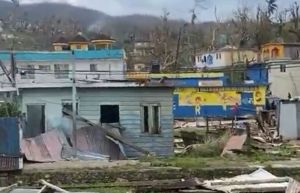An investigation is underway by state wildlife officials in a northern Nevada marina to explain why 100,000 fish have recently died, the Associated Press reported.
In the Sparks Marina along U.S. Interstate 80 east of Reno, an estimated 100,000 trout, bass and catfish have died over the past month due to an apparent result of a dramatic, unexplained drop in dissolved oxygen levels, Nevada Department of Wildlife spokesman Chris Healy said on Wednesday.
According to the AP, oxygen-poor waters could have risen from the old rock quarry's bottom onto the surface due to a bitter cold snap, scientists said. But they couldn't understand the reason that might have triggered the massive die-off.
The death of an estimated 3,000 fish in one corner of the lake in mid-December was caused by low oxygen levels, fish biologists said. But Healy claimed that at that point of time, they figured the event to be localized and of limited impact.
Any live fish in the 77-acre lake has gone undetected since then. While numerous dead fish have been removed from the lake's shoreline, Healy said it's likely the rest have sank to the bottom, the AP reported.
"The 100,000 dead fish figure is something that is probably a pretty conservative guess," said Healy, who estimates they've stocked close to 1 million adult fish in the lake since they started in 1998. "We don't know if any small fish have survived, but for all intents and purposes, the fishery doesn't exist anymore."
After a boat survey on Monday found dissolved oxygen levels to be far too low to support the fish at 11 different sampling locations, scientists determined the problem was much more serious than they realized, the Reno Gazette-Journal first reported.
An electronic fish-finder also showed that no fish was swimming in the lake's depths, the AP reported.
Lakes like the man-made structure which was built 15 years ago, consist of different layers of water temperatures, with the warmest water on top holding the highest oxygen content, Healy said. In one theory, a "violent turnover" could have sucked up additional oxygen when the surface water got chilled very quickly, sank toward the bottom of the lake and stirred up material on its floor.
"Everything is a theory right now," Healy said.
Describing the water as good quality, Sparks city spokesman Adam Mayberry emphasized there's no health or safety threat at the marina, the AP reported.
"Even with the biological anomaly we are seeing, it's still a very safe body of water," he said. "You just can't fish in the marina right now because there aren't any fish there, and we are trying to figure out why."
Although routine testing has revealed no problems before, new toxicity tests have been conducted and are awaiting results, Michael Drinkwater, manager of the Truckee Meadows Wastewater Reclamation Facility which collects water from the lake, said.
"There's no obvious indication hydrocarbon pollution could be associated with the die-off," he told the Gazette-Journal.
Dissolved oxygen levels in the range of 1.1 to 1.9 parts per million was found through testing earlier this week, Healy said. Fish do best with levels in the range of 7 to 9 parts per million and typically can't survive when it drops below 5 parts per million.
According to the AP, "The Sparks Marina opened in 2000, with a 2-mile walking and bike trail, beaches, playgrounds, picnic areas and a fishing pier. The former aggregate pit operated by Helms Construction Co. had been found to be contaminated in 1988 by pollutants leaking from an adjacent tank farm, but state environmental officials said all the pollution had been cleaned up before a 1997 New Year's Day flood sent Truckee River waters into the pit."
© 2025 HNGN, All rights reserved. Do not reproduce without permission.








